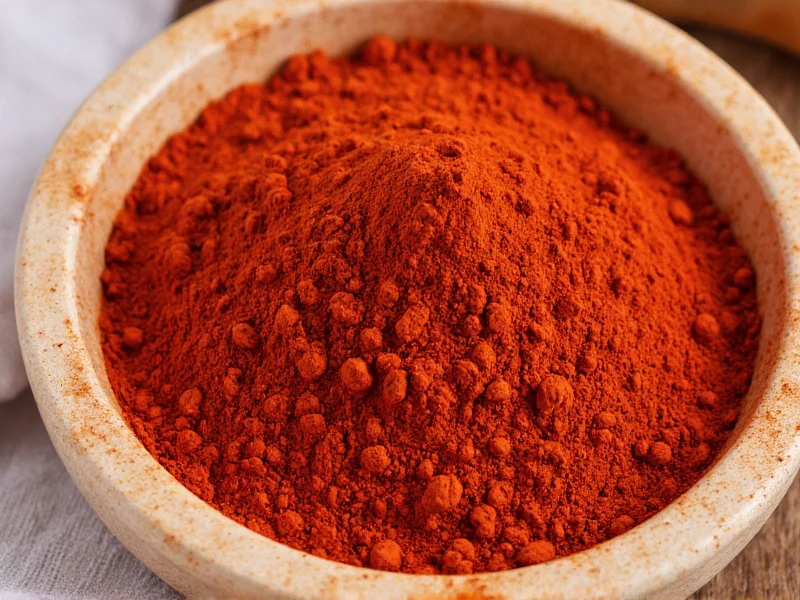Chefs and home cooks seeking authentic Mexican flavors increasingly turn to cascabel chile powder for its unique taste profile that balances heat with complexity. Unlike many commercial chili blends, pure cascabel powder delivers a clean, unadulterated flavor that enhances rather than overwhelms dishes. Understanding its proper use separates authentic Mexican cooking from generic 'Mexican-style' preparations.
Understanding Cascabel Chile Characteristics
The cascabel chile (meaning 'rattle' in Spanish) earns its name from the loose seeds that create a rattling sound when dried pods are shaken. When processed into powder, these chiles maintain their signature qualities:
| Characteristic | Details |
|---|---|
| Heat Level | 1,500-2,500 Scoville Heat Units (medium) |
| Flavor Profile | Nutty, woodsy, with hints of tobacco and dried berries |
| Color | Deep brick red to mahogany |
| Best Used In | Sauces, moles, adobos, stews, and meat rubs |
| Whole Chile Equivalent | 1 tablespoon powder = 4-5 dried whole chiles |
Culinary Applications and Technique
Professional chefs recommend toasting cascabel chile powder briefly in a dry skillet before use to unlock its full aromatic potential. This simple technique transforms the flavor from one-dimensional to complex. When incorporating into liquids, always mix the powder with a small amount of warm oil or broth first to prevent clumping and ensure even distribution.
For authentic Mexican cooking, cascabel chile powder shines in:
- Mole sauces - Provides earthy depth without overwhelming heat
- Adobo marinades - Complements vinegar and garlic beautifully
- Bean dishes - Adds complexity to refried beans and stews
- Meat rubs - Works particularly well with pork and game meats
- Soups and stews - Enhances traditional pozole and menudo
Cascabel vs Other Chile Powders
Understanding the differences between similar chile powders prevents recipe failures. Many cooks confuse cascabel with more common varieties:
- Cascabel vs Ancho - Ancho (from poblano peppers) is fruitier and slightly sweeter with lower heat (1,000-1,500 SHU), while cascabel offers more nuttiness and complexity
- Cascabel vs Guajillo - Guajillo has brighter fruit notes and higher acidity, making it better for salsas, while cascabel provides deeper earthiness ideal for moles
- Cascabel vs Chipotle - Chipotle brings distinct smokiness from smoking jalapeños, while cascabel offers natural woodsy notes without smoke
Substitution Guidance for Home Cooks
When authentic cascabel chile powder isn't available, proper substitution maintains dish integrity. The best cascabel chile powder substitution depends on your recipe's requirements:
- For mole recipes: Combine equal parts ancho and guajillo powder (1:1 ratio)
- For adobo sauces: Use pure ancho powder with a pinch of cumin
- For meat rubs: Mix pasilla powder with a touch of smoked paprika
- Avoid substituting with generic 'chili powder' which contains additional spices
Remember that cascabel chile powder substitution works best when you understand what flavor element you're trying to replicate - the nuttiness, moderate heat, or earthy depth.
Storage and Freshness Tips
Like all ground spices, cascabel chile powder loses potency over time. For optimal flavor:
- Store in an airtight container away from light and heat
- Use within 6 months for peak flavor (though safe indefinitely)
- Freeze in small portions for long-term storage (up to 1 year)
- Perform the 'sniff test' - fresh powder has an immediately noticeable aroma
Grinding your own powder from whole dried cascabel chiles just before use delivers superior flavor compared to pre-ground versions. Simply remove stems and seeds, toast lightly, then grind in a dedicated spice grinder.
Common Misconceptions Clarified
Several myths persist about cascabel chile powder that affect cooking results:
- Misconception: Cascabel and pequin are the same - Reality: Pequin is much hotter (40,000-60,000 SHU) with different flavor
- Misconception: All 'red chili powder' is interchangeable - Reality: Different chiles create distinctly different flavor profiles
- Misconception: More heat means better flavor - Reality: Cascabel's moderate heat allows its complex flavors to shine
- Misconception: Powdered chiles are just for heat - Reality: They primarily add flavor dimension with heat as a secondary element
Practical Usage in Everyday Cooking
You don't need to prepare elaborate Mexican dishes to enjoy cascabel chile powder. Modern applications include:
- Adding 1/4 teaspoon to roasted vegetable dishes
- Enhancing homemade tomato sauce or pizza sauce
- Mixing into mayonnaise for a flavorful sandwich spread
- Seasoning popcorn or roasted nuts
- Adding depth to vegetarian chili recipes
When experimenting with cascabel chile powder in non-traditional dishes, start with small amounts (1/8-1/4 teaspoon) and adjust to taste, as its flavor can dominate delicate preparations.











 浙公网安备
33010002000092号
浙公网安备
33010002000092号 浙B2-20120091-4
浙B2-20120091-4